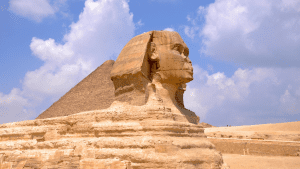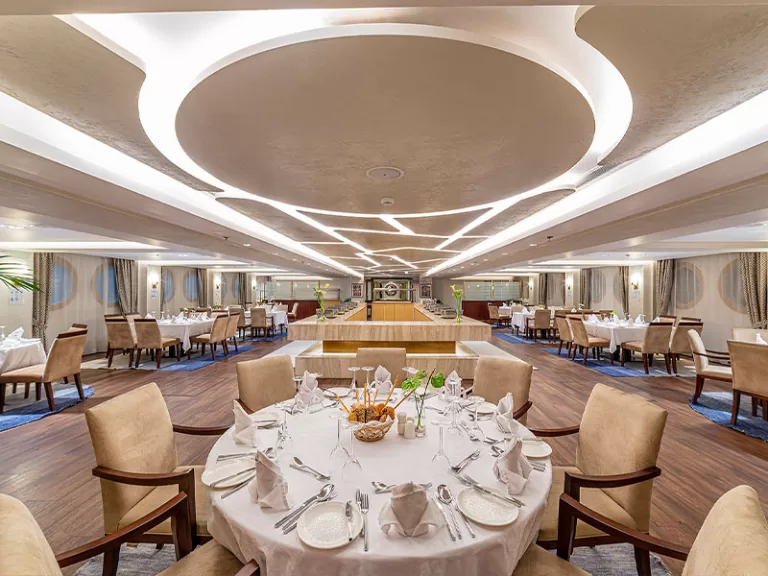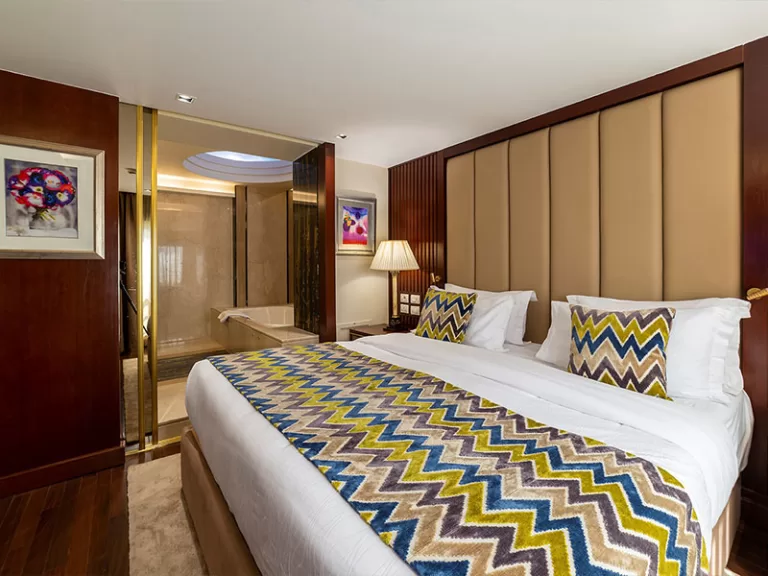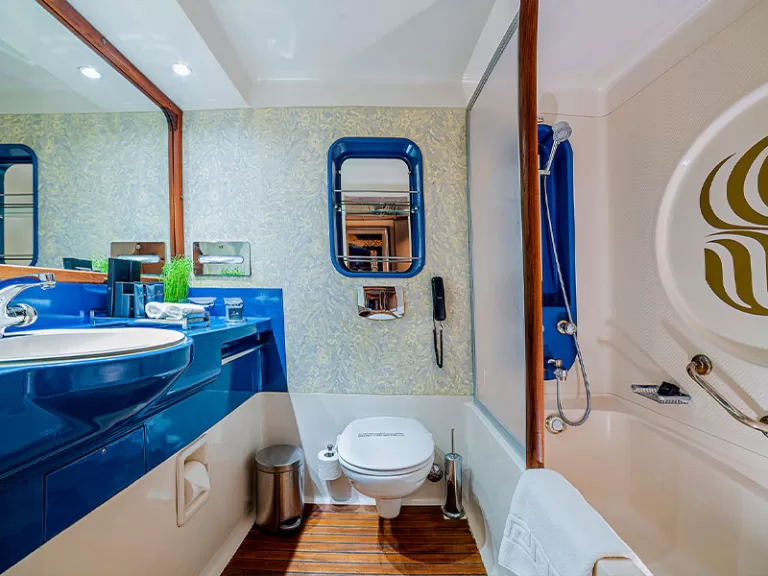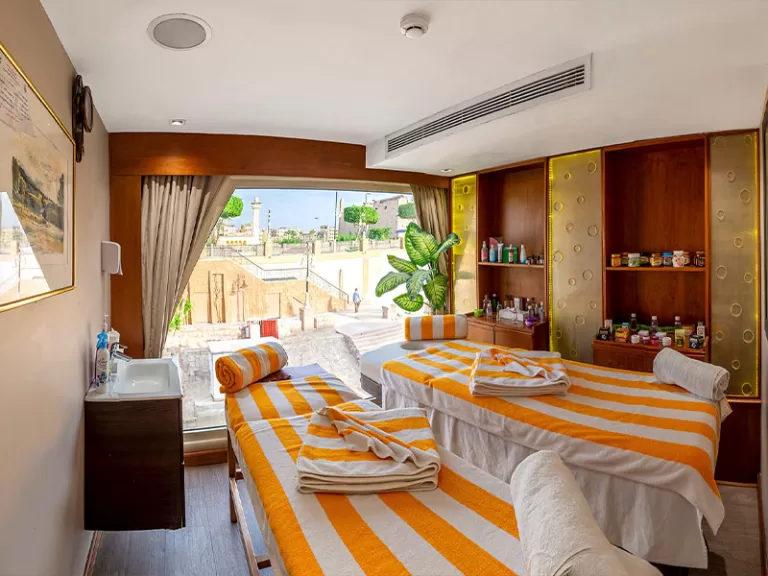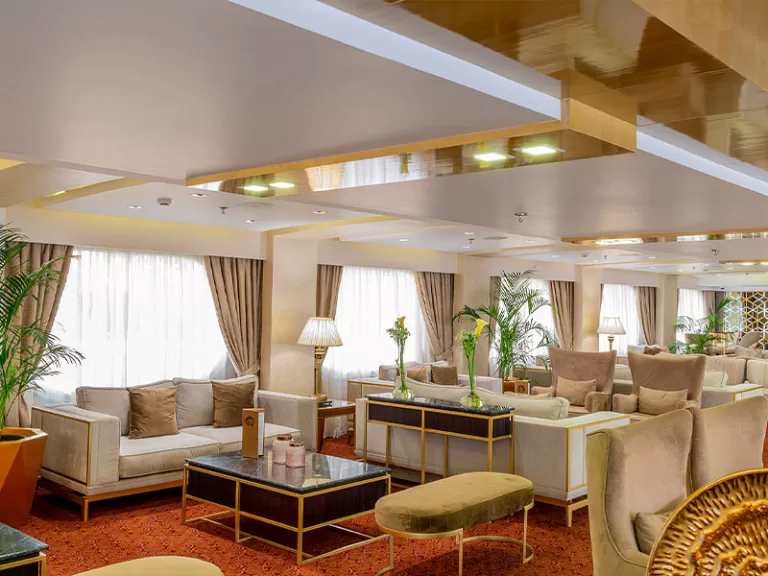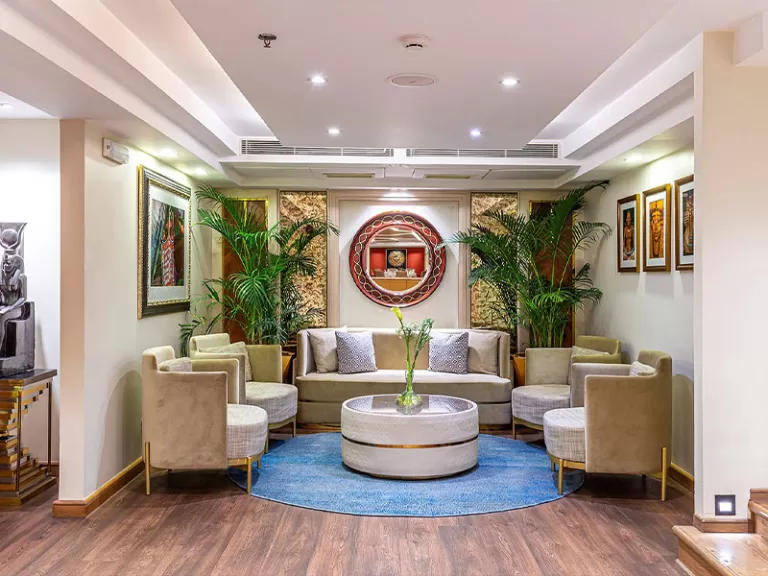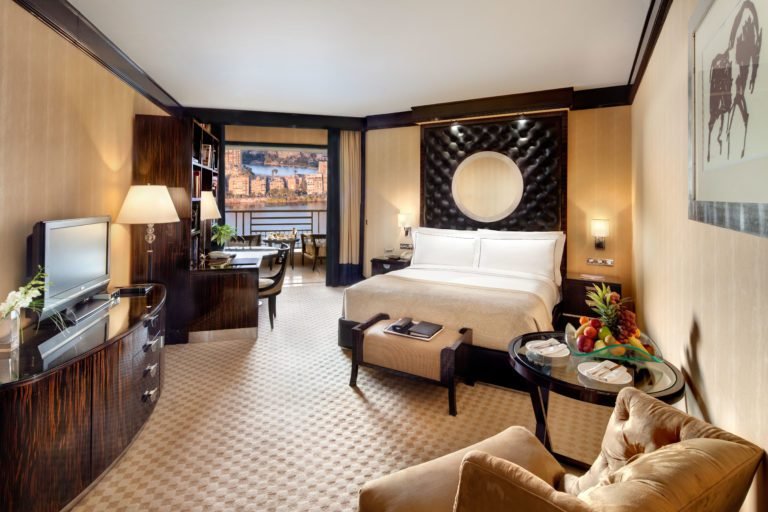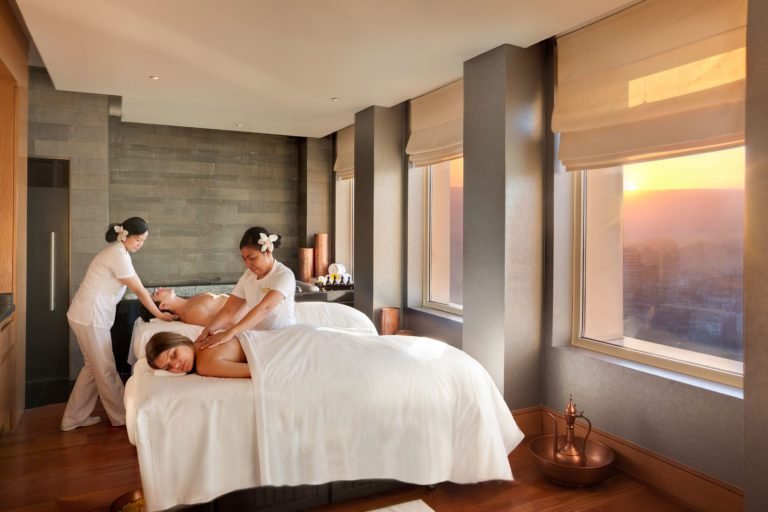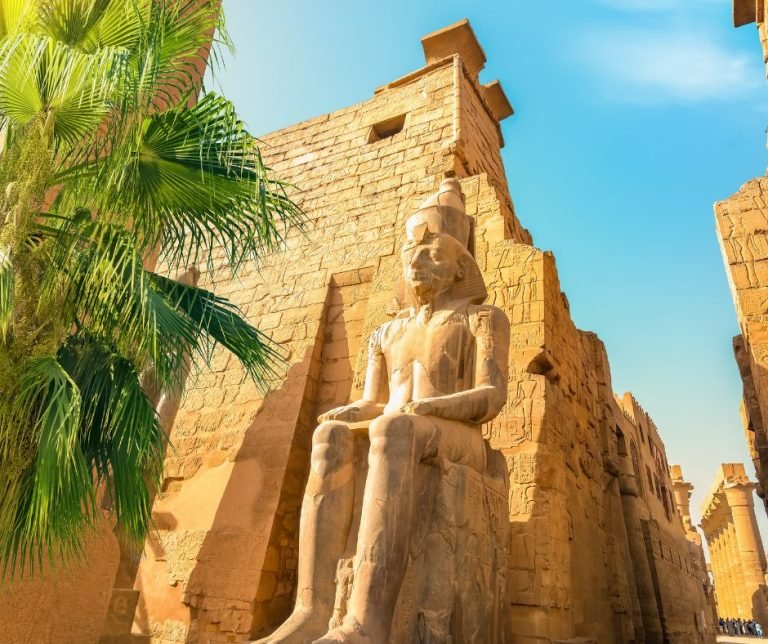
Home » Weekly Blog » Journey Through Time: Exploring the Majestic Luxor Temple with Ancient Navigator
Journey Through Time: Exploring the Majestic Luxor Temple with Ancient Navigator
Table of Contents
Introduction
Nestled on the east bank of the Nile River, in the heart of modern-day Luxor, stands one of the most extraordinary monuments of ancient Egypt: Luxor Temple. This awe-inspiring structure, a testament to the grandeur and sophistication of the ancient Egyptian civilization, has captivated travelers for centuries. Its towering columns, colossal statues, and intricately carved hieroglyphs tell stories of gods and pharaohs, of rituals and celebrations, of a time when Egypt was at the height of its power.
At Ancient Navigator, we believe that a journey through history should be as luxurious as it is enlightening. We invite you to experience the wonders of Luxor Temple not just as a visitor, but as a modern-day explorer, delving deep into the mysteries of the past while enjoying the comforts of the present. Our expertly curated tours offer a seamless blend of historical discovery and indulgent relaxation, ensuring that your visit to Luxor Temple is not just memorable, but truly unforgettable.
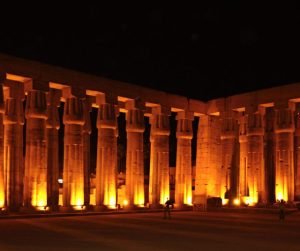
The Historical Significance of Luxor Temple
Origins and Construction
Luxor Temple is more than just an ancient structure; it is a monumental embodiment of the cultural and religious heart of ancient Egypt. Its origins date back to around 1400 BCE, during the reign of Pharaoh Amenhotep III, one of Egypt’s most powerful and influential rulers. Commissioned as a grand temple dedicated to the Theban triad—Amun-Ra, his wife Mut, and their son Khonsu—Luxor Temple was intended to be not only a place of worship but a symbol of divine kingship.
The temple’s construction marked a period of unprecedented prosperity and cultural flourishing in ancient Egypt. Amenhotep III’s reign was characterized by architectural innovation and artistic excellence, and Luxor Temple was no exception. The original temple featured a large peristyle courtyard, a series of processional colonnades, and a sanctuary that housed the sacred barque of Amun-Ra. The design of the temple reflected the architectural principles of balance, harmony, and symmetry, which were central to Egyptian cosmology.
However, the temple as we see it today is the result of several expansions and modifications made by subsequent rulers, most notably Ramses II, who added a grand entrance pylon, a vast courtyard, and several colossal statues of himself. Ramses II’s additions not only enhanced the temple’s grandeur but also reinforced its significance as a center of royal and religious power. The combination of these two monumental builders—Amenhotep III and Ramses II—resulted in a structure that is both a masterpiece of ancient engineering and a testament to the enduring legacy of Egypt’s great pharaohs.
The Role in Ancient Egyptian Religion
Luxor Temple was not merely an architectural wonder; it was a living, breathing center of spiritual life in ancient Thebes, the city known as the “City of a Hundred Gates.” Unlike many other temples in Egypt that were dedicated to a single deity, Luxor Temple was dedicated to the Theban triad of gods: Amun-Ra, the king of the gods; Mut, the mother goddess; and Khonsu, the moon god. This triad was central to the religious identity of Thebes, and the temple played a crucial role in the worship and veneration of these deities.
One of the most significant religious events associated with Luxor Temple was the annual Opet Festival, a grand celebration that lasted for nearly a month. During this festival, the statues of the Theban triad were carried in a ceremonial procession from Karnak Temple to Luxor Temple, a journey that symbolized the renewal of the pharaoh’s divine right to rule. The procession would travel along the Avenue of Sphinxes, a road lined with hundreds of sphinx statues that connected the two temples, and the gods were believed to bestow their blessings on the people of Thebes during this time.
The Opet Festival was not just a religious event; it was a grand spectacle that brought together the entire city. Priests, musicians, dancers, and citizens participated in the celebrations, which included feasts, music, and ritual performances. Luxor Temple, at the center of these festivities, became a place where the divine and the mortal worlds intersected, where the pharaoh reaffirmed his role as the intermediary between the gods and the people. The temple’s walls are adorned with detailed reliefs depicting these events, providing us with a vivid glimpse into the spiritual life of ancient Egypt.
Luxor Temple’s significance in ancient Egyptian religion cannot be overstated. It was not just a place of worship, but a symbol of the unity between the pharaoh, the gods, and the people. Its role in the Opet Festival, in particular, underscores its importance as a center of religious and political power in ancient Egypt, a place where the divine right of the pharaoh was celebrated and reaffirmed each year.
Architectural Marvels of Luxor Temple
Key Architectural Features
As you approach Luxor Temple, the first thing that strikes you is its sheer scale and grandeur. The temple’s entrance is marked by a massive pylon, or gateway, flanked by two towering obelisks—though only one remains standing today, the other having been transported to Paris where it now stands in the Place de la Concorde. This pylon, built by Ramses II, is adorned with scenes of the pharaoh’s military victories, symbolizing his power and divine favor.
Passing through the pylon, you enter the Great Court of Ramses II, one of the most impressive features of the temple. This vast courtyard is surrounded by a double row of 74 papyrus columns, each standing over 15 meters tall. The columns are intricately carved with scenes of religious rituals and royal decrees, providing a visual narrative of the temple’s significance in both spiritual and political life. The statues of Ramses II, in both seated and standing positions, dominate the court, their imposing presence reminding visitors of the pharaoh’s divine authority.
Beyond the Great Court lies the Hypostyle Hall, a forest of massive columns that support the temple’s roof. Each column is adorned with detailed carvings and hieroglyphs, depicting scenes of the pharaoh making offerings to the gods. The Hypostyle Hall is a marvel of ancient engineering, with its towering columns creating a sense of awe and reverence. The play of light and shadow within the hall, as the sun filters through the narrow spaces between the columns, adds to its mystical atmosphere.
Further into the temple, you reach the inner sanctuaries, where the sacred barques of the gods were once housed. These small, dark chambers are the heart of the temple, where only the highest priests and the pharaoh were allowed to enter. The walls of these sanctuaries are covered with intricate carvings and inscriptions, some of which still retain traces of their original colors, offering a glimpse into the vibrant world of ancient Egyptian religion.
The Nighttime Illumination Experience
While Luxor Temple is breathtaking by day, it takes on an entirely different character at night. As the sun sets and the shadows lengthen, the temple is bathed in a soft, golden light, its columns and statues illuminated against the darkening sky. This nighttime illumination is a relatively recent addition, but it has quickly become one of the highlights of a visit to Luxor Temple.
The carefully placed lighting accentuates the temple’s architectural features, casting dramatic shadows and highlighting the intricate details of the carvings and reliefs. The effect is both enchanting and mysterious, creating an atmosphere that is almost otherworldly. Walking through the temple at night, you can almost feel the presence of the ancient gods and pharaohs, as if the temple is alive with the spirits of the past.
The nighttime experience also offers a quieter, more intimate way to explore the temple. The crowds are thinner, the air cooler, and the atmosphere more serene, allowing you to fully appreciate the majesty of the temple without the distractions of the daytime hustle. It’s a time for reflection and contemplation, a chance to connect with the history and spirituality of the place on a deeper level.
At Ancient Navigator, we highly recommend experiencing Luxor Temple both by day and by night. Each offers a different perspective on the temple’s beauty and significance, and together they provide a more complete and immersive experience. Our tours are designed to give you the best of both worlds, with the flexibility to explore the temple at your own pace, whether in the full light of day or under the stars.
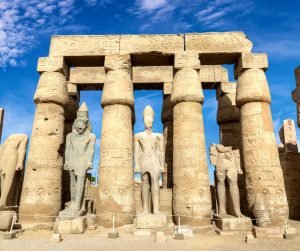
Insider Tips for Visiting Luxor Temple
Best Times to Visit
Timing is everything when it comes to visiting Luxor Temple, and knowing the best times to go can greatly enhance your experience. The temple is open year-round, but the time of day and season you choose to visit can make a big difference in your comfort and enjoyment.
The early morning hours, just after the temple opens, are ideal for those who want to avoid the crowds and the heat. The temple is less busy, and the soft morning light is perfect for photography, casting a warm glow on the stone columns and statues. This is also a peaceful time to explore the temple at your own pace, without the distractions of large tour groups.
Another excellent time to visit is late afternoon, when the sun is lower in the sky and the temperatures are cooler. The golden hour just before sunset is particularly beautiful, as the fading light enhances the temple’s intricate carvings and reliefs. Staying for the nighttime illumination, as mentioned earlier, offers a completely different perspective on the temple’s grandeur.
If you’re visiting Luxor during the hotter months of summer, early morning or late evening visits are essential to avoid the peak heat of the day. However, Luxor Temple is also a fantastic destination in the cooler months of winter, when the temperatures are more moderate and the crowds are smaller. No matter when you choose to visit, Ancient Navigator will ensure that your experience is perfectly timed to make the most of your journey.
What to Bring and Wear
Comfort is key when visiting Luxor Temple, and being prepared can help you make the most of your experience. Here are some tips on what to bring and wear:
Lightweight Clothing: The Egyptian sun can be intense, especially during the summer months. Lightweight, breathable clothing made from natural fabrics like cotton or linen will help keep you cool. Long sleeves and pants are also recommended to protect your skin from the sun.
Comfortable Footwear: Luxor Temple covers a large area, and you’ll be doing a lot of walking on uneven surfaces. Sturdy, comfortable shoes are a must to ensure that you can explore the temple without discomfort.
Sun Protection: Even if you’re visiting in the cooler months, the sun can still be strong. A wide-brimmed hat, sunglasses, and sunscreen with high SPF are essential to protect yourself from sunburn.
Water Bottle: Staying hydrated is important, especially if you’re visiting during the hotter months. Bring a reusable water bottle with you, and take advantage of the shaded areas within the temple to rest and rehydrate.
Camera: Luxor Temple is a photographer’s dream, with countless opportunities to capture stunning images. Whether you’re using a professional camera or a smartphone, make sure it’s fully charged and that you have plenty of storage space for photos.
Guidebook or App: While our expert Egyptologists will provide you with detailed insights during your tour, having a guidebook or app on hand can be useful for further exploration on your own. There are several excellent resources available that provide additional information on the temple’s history and architecture.
Photography Tips
Luxor Temple is one of the most photographed sites in Egypt, and for good reason. Its towering columns, intricate carvings, and dramatic lighting offer endless opportunities for stunning images. Here are some tips to help you capture the beauty of the temple:
Shoot During Golden Hour: The soft, warm light of the early morning and late afternoon is perfect for photography. The shadows are longer, and the colors are richer, giving your photos a more dynamic and atmospheric quality.
Use a Wide-Angle Lens: Luxor Temple’s scale is impressive, and a wide-angle lens will allow you to capture the grandeur of the architecture. This is especially useful in the Hypostyle Hall, where the towering columns can be difficult to fit into a single frame.
Focus on Details: While it’s tempting to capture the entire temple in a single shot, don’t forget to focus on the details. The carvings, hieroglyphs, and statues are incredibly intricate, and close-up shots can reveal the artistry and craftsmanship that went into creating them.
Experiment with Angles: Try shooting from different angles to capture the temple in a new light. Get low to the ground to emphasize the height of the columns, or shoot from above to highlight the symmetry of the architecture.
Take Advantage of Reflections: If you visit the temple at night, look for reflections in the surrounding water or on the polished stone surfaces. These can add a unique and artistic element to your photos.
Be Patient: Luxor Temple can get busy, especially during peak tourist seasons. If you’re aiming for a shot without people in it, be patient and wait for the right moment. Early morning or late evening visits are usually quieter, giving you more opportunities for unobstructed shots.
Conclusion
Luxor Temple is more than just a historical site; it is a journey through time, a portal to the world of ancient Egypt, where gods and pharaohs once walked among mortals. Its grandeur and significance have captivated travelers for centuries, and with Ancient Navigator, you can experience this magnificent temple in a way that is as luxurious as it is enlightening.
Whether you’re marveling at the towering columns in the soft light of dawn, exploring the intricate carvings that tell the stories of the gods, or simply soaking in the serene atmosphere of the temple at night, Luxor Temple offers a truly unforgettable experience. And with Ancient Navigator’s expertly curated tours, luxurious accommodations, and personalized service, your journey to Luxor Temple will be one of discovery, relaxation, and inspiration.
So why wait? Embark on your own journey through time with Ancient Navigator, and let us guide you through the wonders of Luxor Temple, where history comes alive in a setting of unparalleled beauty and luxury. Book your experience today, and prepare to be amazed.
Explore Luxor Temple with Ancient Navigator
Ready to embark on an unforgettable journey through history? Discover the majesty of Luxor Temple with Ancient Navigator’s luxurious, personalized tours. From expertly guided visits to exclusive access experiences, we offer a unique way to explore one of Egypt’s most iconic landmarks.
Visit our website to learn more about our Luxor Temple tours, or contact us directly to start planning your trip. Whether you’re a seasoned traveler or a first-time visitor to Egypt, we’ll ensure that your experience is one of a kind.
Don’t miss the opportunity to walk in the footsteps of pharaohs and uncover the secrets of ancient Egypt in style. Book your Luxor Temple tour with Ancient Navigator today, and let the adventure begin.






